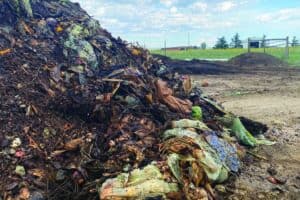In April, Pueblo County granted a land-use permit for Colorado Springs Utilities to build a $1.1 billion pipeline, known as the Southern Delivery System, which will bring water from Pueblo Reservoir to CSU’s water service customers.The water will be stored in the Williams Creek and Upper Williams Creek reservoirs, east of Colorado Springs and south of Highway 94.According to the SDS Web site (www.sdswater.org), by paying property taxes, El Paso County residents have invested more than $65 million in the Fryingpan-Arkansas project water facilities, including Pueblo Reservoir.CSU has spent years planning the project and negotiating for the permit.At first glance, the SDS doesn’t appear to have much benefit for the Falcon area, but, on second glance, the permit allows CSU to provide water to other agencies in El Paso and Teller counties.CSU’s Utilities Policy Advisory Committee is currently “examining the possibility of regionalization and sharing of SDS,” said Janet Rummel, CSU spokeswoman.They’ve just started the research and won’t make a recommendation until the end of the year, Rummel said. “There’s a possibility we could expand the number of partners in the project. Some of the Falcon water providers could potentially [participate],” she said.Kip Petersen, general manager of the Cherokee Metropolitan District, which provides water to Falcon area housing developments, said Cherokee already has a connection to CSU’s system of water pipes.According to a May 2 article in The Gazette, Cherokee buys 500-acre feet of water a year from CSU under a temporary sharing agreement. CSU also has a temporary agreement to transport water owned by Manitou Springs to Manitou Springs.Petersen said he’s encouraged that Colorado Springs has directed UPAC to study the possibility of sharing the water with other water providers.”They have a lot to consider,” Petersen said.Water sharing might encourage development outside the city, resulting in reduced sales tax revenue for the city.”What happens if the city grows in 50 years to the point where they now need excess capacity? Should they sell treated or untreated water? These are the issues that have to be resolved,” Peterson said. “They may not all be resolved but at least we’re talking and that’s very encouraging.”Larry Bishop, district manager of the Woodmen Hills Metropolitan District, said his district “might be able to partner up if we had water rights that we could put into the system.”For now, “we’re OK water-wise,” said Bishop, who’s currently in negotiations for renewable water resources.”I don’t want to burden my residents with any more additional debt or expenses. You have to have growth to pay for [new water resources]. Once we start to grow again, I want to be able to rest our groundwater basin wells and conserve that as much as possible.”At one time, CSU planned to use Jimmy Camp Creek, near Falcon on the south side of Highway 24 at the intersection of Highway 94, as storage for SDS water. They bought houses in anticipation of the area becoming a reservoir.Rummel said the plan to use Jimmy Camp Creek changed when the Bureau of Reclamation recommended the Upper Williams Creek site as a better location because of fewer environmental impacts.The houses are still occupied by their former owners, who pay rent to CSU, she said.The fate of the houses will not be known until decisions about the pipeline’s route are finalized, Rummel said.”Jimmy Camp is still the terminal reservoir site for the Highway 115 alternative [through Fremont County] and is essentially a backup plan for us,” Rummel said.”The Pueblo County option has always been our preferred alternative, but if we were to hit any major road blocks with the Pueblo County option, we still want the ability to construct the Highway 115 alternative if needed.”According to a May 9 article in The Gazette, CSU plans indicate that the SDS pipeline will be operational by 2012. Filling the Upper Williams Creek Reservoir will take six years.In the article, Keith Riley, SDS project planning and permitting manager, said the Colorado Division of Wildlife will stock both reservoirs, probably with bass, walleye, perch and blue gill, bringing fishing opportunities closer to Falcon.Swimming and boating will not be allowed on Williams Creek Reservoir, but they have not made a decision about the kinds of activities that will be allowed on the Upper Williams Creek Reservoir, Riley said.






